
- Human has talent for social and spatial reasonining.
- Computer capable of doing manipulation of meaningless data.

- There is no "state of the art" way to have communication between human and computer.
- At that point communication is specifically made for a purpose from scratch.
- There is no mediator that connnects between human computer.
- Here is the reason why there are 3 kinds of programming language.
- The high level programming language, that is nearly similar to human language. For example, Java, JavaScript, ....
- The medium level programming language, that resides in the middle between high level programming language and low level programming language. This kind of programming language capable of doing human - language level of operation as well as machine language level operation (accessing memory, defining memory allocation, ...). The example of this programming language is the C variants, except for C# that is more similar to Java than any other C variants.
- The low level languages are solely speak machine language. The example of these programming languages are Assembly and Machine Code.
- Here is StackOverflow discussion about "level" in programming language, http://stackoverflow.com/questions/3468068/low-mid-high-level-language-whats-the-difference.
- Here is the screenshot.
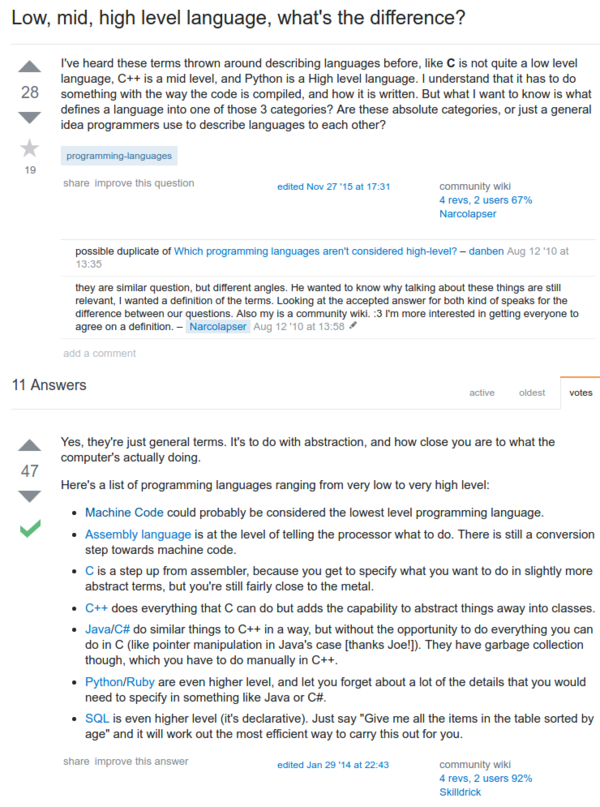

- Human language is not grammatically strict.
- This means that human can speak with wrong grammar and people will still understand it.
- On the other hand, computer/machine language is grammatically strict.
- However, it says in here that both of human language and computer/machine language follow a same principle.
- I just do not know what is the principle meant in this screenshot.

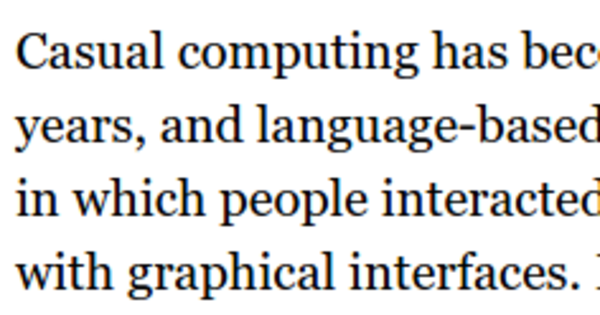
- Casual computing activity refer to computing activity with graphical user interfaces.
- For example non - casual computing activity will be programming with programming language.
- The hardcore, computing activity will be to programming computer machine directly by allocating its memory blocks manually.
- So, the more user interface available for the human the more casual computing activity it is.

- Usually in more flexible operating system, for example in desktop operating system like, Linux, MacOs, or Windows every users can still do the non - casual computing to hardcore computing if they know what and where to set the environment.
- One example of good non - casual "tool" for computing activity is JavaScript.
- JavaScript is exists in almost every web browser.
- This means that JavaScript is exists in about every consumer device.

- The problem with programming is that the programmer often get lost in their own maze.
- Programmers often feel alienated from the program that they are making.

- Learning is a hard work.

- Computer programmer can built universe with nearly unlimited possible combinations.
- Although, there will still be limitations right and left.
- The screenshot is from Joseph Weizenbaum, from his book titled "Computer Power And Human Reason."
- Here is the link to the book, http://blogs.evergreen.edu/cpat/files/2013/05/Computer-Power-and-Human-Reason.pdf.
- Here is the .pdf of the book.
./20170325-1435-cet-1-introduction-11.pdf

- There is no proper analogy to compare computer program with any physical real - life things.

- Computer is a machine that capable to host these immaterial machines.
- These immaterial machine refers to simple memory allocation operation of computing activities.

- Computing is used to execute simple task with incredibly high speed.
- However, this simple task can be stacked with other simple task to construct near infinite possible operations.


- Keeping codes under control is a programmer's bane.

- The programming is actually the art of controlling complexity.


- There are a lot way to do stuffs in programming.
- However, as it is mentioned here, programmers tend to stick in a way.
- Sometimes, any programmers who would like to think out side of the box from their codes will be outcast and labeled as a "bad programmer".

- Programming is an ever updated profession.
- One needs to keep exploring and learning on the possible new technology.

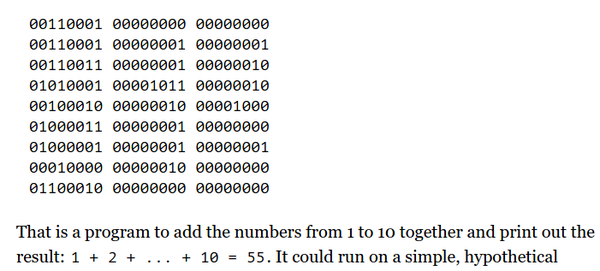
- Example of the earliest low level programming languages.
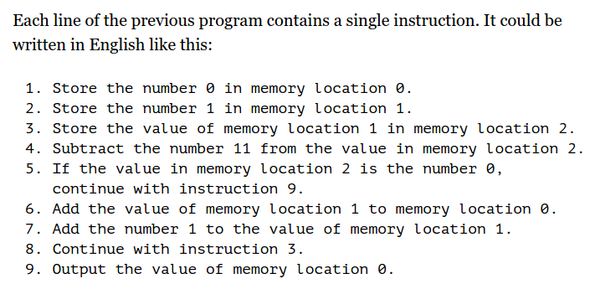
- But then people starting to understand that it could be made more humane.
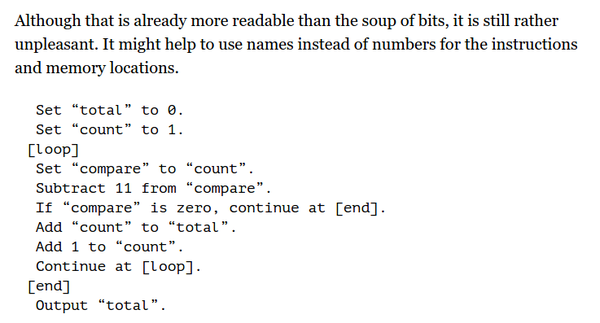
- And then there is an incentive to name a memory block. This is then what it is now variable.

if,while, ... are an example of programming construct.- These already set as a set of operations in lower level language.
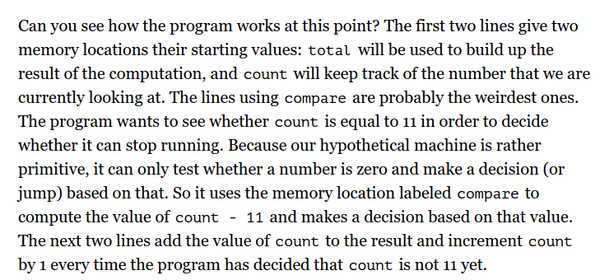
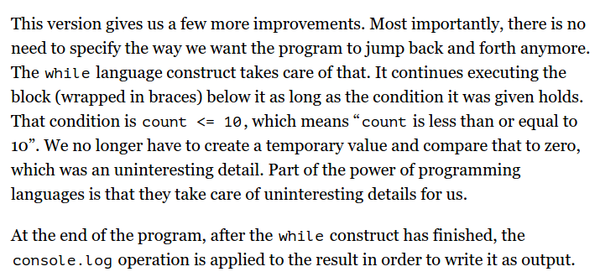
- Every number that you put in a statement will "technically" construct a variable.
- You could see that as
comparevariable in an example from above screeshot.

- Programming language defines a lot of uninteresting details of programming for higher level developer to program.

- Example of the shortest definition of loop in the most concise operation possible.

- To sum up, program can be made in any way possible, from long to short, from unreadable into readable.

- JavaScript has nothing to do with Java.
- Java was first and then JavaScipt came.
- At the time when JavaScript is invented Java was (I think), the most popular programming language.
- Thus, JavaScript developer wants to bandwagon their creation to Java.
- Hence, the name JavaScript.

- JavaScript and ECMAScript is the same.
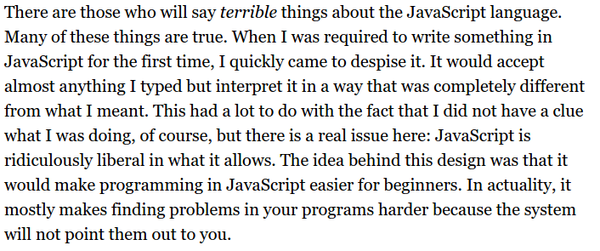



- JavaScript is very liberal programming language.
- JavaScript has low entry point for beginner.
- However, as your project grows it will getting significantly harder to manage your code.

- The upcoming JavaScript is the ECMAScript 6 JavaScript that will be updated soon enough. There are several web browsers those already apply ECMAScript partially.

- Web browsers is not the only platforms in JavaScript.
- Some database like MongoDB and CouchDB use JavaScript as their programming and query language.

- NodeJS capable of doing system level operation through JavaScript codes.
- Although, NodeJS itself is built with C++ back - end.

- Please consider active learning when learning everything.
- Try to practice the theory.
- This may slow, but you will get easier learning the next similar thing you want to learn.

- Do not assume you are understand before you are doing the solution by yourself.

- As well as do not forget to exercise.

- There is a source code for everything those are listed in this book.


- These are the overview of the book.
- There will be a chapter where I asked to develop myself these things.
- Artificial life simulator.
- Dynamic website.
- Pain program.
- Platformer video game.
- Programming language.


- I am wondering what they meant by creating abstract codes?
- It says here that the more abstract your code is, the more control you have over the codes you made.



- There is a chapter about error handling and fixing as well.
- And regular expression.
- Regular expression is the best way to do string manipulation.
- I wanted to learn this, but I saw there is a ton of specifics syntax to selecting and modifying text, hence I cowered up.


- Modularity is another example on writing clean codes.

- Overall structure of the book.